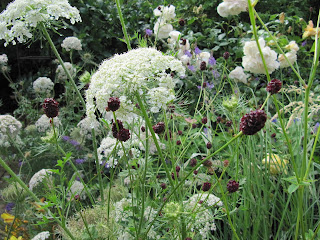I’ve recently been to a Society of Garden Designers seminar, where members gather together to listen to the wisdom of the most respected in the profession and the title of this year’s was ‘What are gardens for?’
Gardens are made by people and as people are all different, then the reasons for making them, although superficially similar, are as diverse as we are but I don’t think it’s unfair to say that most of us don’t really think about it that much, just carrying on mowing the lawn and pruning the roses with a bit of a change here and there as the babies become toddlers with trikes and a sandpit and then a trampoline and goal posts.
Eventually the children grow up, fly the nest and mum and dad can sit back and relax on a new patio.
Well that is a least how it used to be when children liked playing outside, but the sad fact is that being outside is now the least favourite occupation of seven to eleven year olds, according to an excellent speaker at the seminar, Wendy Titman. Sedentary pastimes are much more popular, with the dreadful consequence that by the time children leave primary school, countrywide one in three are overweight and if statistics are to be believed that figure is set to keep on rising.
Is it because so many children are now brought up in densely populated cities lacking in green space, or is it that gardens are so far down on planners’ and house builders’ agendas that they’ve dwindled in size to become only slightly bigger than the new kitchen?
I’m sure they are many and varied but whatever the reasons, many children have become alienated form the natural world right from the very beginnings of their lives. It’s hard for me to reconcile this fact as I watch my neighbour’s children hurtle along the street on their bikes, but a sad fact nonetheless.
For the New Year what about this as a resolution. Get the kids outside in the garden more, encourage them to poke about in the soil, dig up worms if they want to, show them how to plant seeds, grow a few veg to eat or just chill out with them and listen to the birds.
It’s the earliest years which make the difference and maybe this is one of the most important answers to ‘What are gardens for?’
They are places to play and as children we don’t just play for the sake of it, it burns calories, it gives us vital vitamin D and stimulates our immune systems.
It’s how our species learn to understand about the world around us - important or what!
Nobody will care about the natural world unless they understand it.
Sir David Attenborough




























